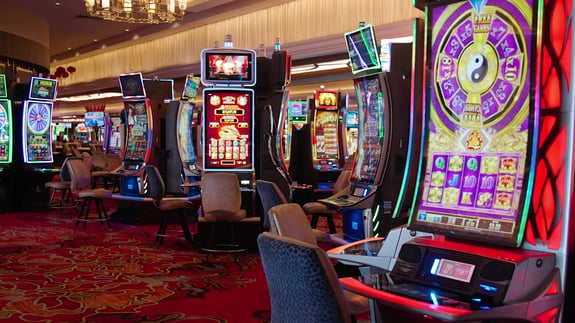When it comes to slot machines, players frequently get enthralled by the shimmering lights, engaging themes, and the excitement of turning the reels. But behind the glamour and entertainment lies an essential concept that all players must grasp: RTP, or RTP. This crucial metric holds great importance in influencing how much of your wagered money will return to you over time, shaping your experience and strategy as you play.
RTP is commonly stated as a percent and reflects the average amount of money returned to players compared to the cumulative wagers. For instance, if a slot game has an RTP of ninety-five percent, it means that, on average, players should anticipate receiving ninety-five dollars for every 100 dollars wagered. Understanding this concept can assist players in making educated decisions when deciding on slots to spin, ultimately enhancing their gaming experience at the casino.
What the definition of RTP?
RTP, also known as RTP, represents a crucial factor within slot machine games. It indicates the fraction of all wagered money that a slot machine is designed to return to players over time. For example, if a slot has an RTP of 95%, this means that, hypothetically, players are likely to receive back $95 for every $100 placed in the long run. Knowing RTP assists players evaluate the likely returns of different slots.

RTP is not a guarantee of individual wins but instead a average determined over many spins. Individual players’ experience may differ significantly as a result of the luck built-in in slot games. A better RTP suggests more favorable odds for the player, thus making it a key consideration to think about when selecting the slots to play. Nonetheless, despite having high RTP, there can be phases in which players experience losses, because randomness plays a significant role.
It is important to note that various slots have diverse RTP percentages. Some machines could display a reduced RTP because of a high level of entertainment or special features, while others keep a elevated percentage to attract more cautious players. Understanding RTP empowers players to take educated decisions about their gaming strategies and oversee their bankrolls efficiently while relishing the thrill of casino slots games.
How RTP is Calculated
A RTP, also known as RTP, represents a vital indicator in the world of casino slot machine games. It denotes the percentage of all wagered money that a gaming device can be expected to return to players in the long run. Understanding the method by which RTP is derived requires insight into both the slot’s architecture and its reward system. The RTP is calculated via intricate algorithms and data evaluation executed during the game development phase. Slot creators take into account various factors, including the likelihood of successful combinations and the size of payouts for every outcome.
To compute RTP, the creators model a vast quantity of rotations of the slot machine. These simulations help determine how much on average, a gambler can expect to win based on their bets. For instance, when a machine boasts an RTP of 95%, this means that, theoretically, for every one hundred dollars wagered, gamblers can expect to receive ninety-five bucks back over time. That value doesn’t represent the amount a gambler might receive in a one session and over a couple of plays; rather, it shows overall return projections.
RTP values are usually released from the casino or slot developer. Players must always seek out this data when choosing a casino slots, because it can significantly affect their overall enjoyment. A greater return value typically indicates a higher probability to recoup a portion of bets, even though specific sessions may differ greatly. Understanding this concept can help gamblers to choose wisely and enhance their overall enjoyment in the world of slot games.
Importance of RTP in Casino Games
Understanding the RTP or Return to Player is essential for any player involved in slot machines. RTP refers to the percentage of total bets that a slot machine is set to return to players over time. A higher RTP means that gamers can look forward to receiving a bigger portion of their wagers back, making it an important factor for those seeking to maximize their play experience. Knowing this figure aids players make smart choices about which slots to play, as it can significantly affect their potential winnings.
Moreover, RTP plays a key role in the overall fairness and transparency of casino slots. Gamers are often drawn to games with higher RTP percentages because they provide a superior chance of winning over the long term. Gaming establishments and software creators use Return to Player as a selling point to attract gamers, ensuring they maintain a competitive edge in the thriving gaming industry. By understanding of RTP, gamers can choose slots that align with their risk tolerance and gaming goals.
Ultimately, the concept of Return to Player promotes safe gaming practices. By understanding that not all games will provide short-term winnings and that Return to Player is determined by extended play, gamers can manage their anticipations and gambling behavior effectively. This understanding enhances the enjoyment of casino slots while promoting a more balanced gambling landscape. Gamers who grasp the significance of Return to Player are likely to have a more satisfying experience and lessen the chances of problematic gambling behavior.
bl 555
